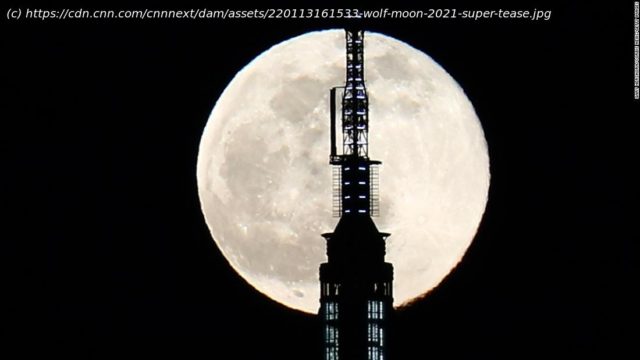“Owoooo!”
Wolves are associated with howling at the moon — a common myth that’s become widely accepted over the ages. Despite the fictional tale, it hasn’t stopped people from connecting the moon with the furry animals. The first full moon of the year is known as the wolf moon, and will appear the evening of Monday, January 17. The moon was named after wolves that were thought to howl more frequently this time of year, according to the Old Farmer’s Almanac. It will peak at 6:51 p.m. ET or 11:51 p.m. GMT. To catch a glimpse of the moon, look above the horizon in the east-northeastern direction, according to NASA. Some moon gazers may spot a bright star near the full moon. It’s Pollux, a star that’s part of the Gemini constellation, NASA said. Both Jupiter and Saturn will also be visible, NASA noted, but they’ll be opposite the moon above the southwestern horizon. More than a wolf moon There is a cornucopia of names for the January full moon besides the wolf moon, including the Old Moon and Ice Moon. Hindus refer to it as Shakambhari Purnima, which marks the last day of Shakambari Navratri, an eight-day holiday honoring the goddess Shakambhari. People in India often bathe in holy waters during this time, NASA said. Assiniboine people who live in the Northern Great Plains in the United States call this the center moon because it is around the middle of winter, according to the Old Farmer’s Almanac. Algonquin people located northeast of the Great Lakes, also in the US, call it ” squochee kesos,” which means, “sun has not strength to thaw.” The Cheyenne people of the Great Plains call it “moon of the strong cold.” Full moons and supermoons There are 12 full moons in 2022, and two of them qualify as supermoons. Definitions of a supermoon can vary, but the term generally denotes a full moon that is brighter and closer to Earth than normal and thus appears larger in the night sky.






